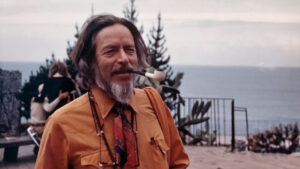From afar came merchant-men,
Bringing, on tidings of this birth, rich gifts
In golden trays; goat-shawls, and nard and jade…
This is clearly not a conventional Christian nativity. The epic poem of which these lines form a part tells another story altogether: peer into this particular cradle, and you would find not Jesus but the Buddha. Drawing on miraculous accounts of the Buddha’s birth, tales of his previous incarnations (Jatakas, or “birth stories”) and Matthew’s gospel, the journalist and poet Edwin Arnold conjured glorious and exotic scenes for what turned out to be a large readership. Published in 1879, The Light of Asia sold up to one million copies by the early Fifties, putting it on a par with Mark Twain’s Adventures of Huckleberry Finn (1884).
Christian critics accused Arnold of giving Buddhism a misleading makeover. Didn’t he know that Buddhists believed in rebirth? If his readers found Darwinism disturbing, how would they feel about waking up as an animal in the next life? And didn’t Arnold know that Buddhists were atheists, whose ultimate goal was annihilation? One of the things that most worried Arnold’s critics was how Christ-like his Buddha seemed to be, adding fuel to speculation that key elements of Christianity were derived from the older religion of Buddhism: the miraculous birth of a central figure, the contours of his life, and his ethical teachings.
A general rule observed by most practitioners of comparative linguistics, mythology and religion up until this point was that the special status of Christian revelation be respected. In the late 1700s, the pioneering linguist Sir William Jones had tried to protect the idea that all the peoples of the earth were descended from the sons of Noah after the Flood — even though his own nascent discipline made that difficult to sustain: Latin, Greek and Sanskrit clearly shared a common ancestor, but languages such as Hebrew didn’t fit the theory so neatly.
When it came to stories of gods and goddesses around the world, all sorts of reasons were offered as to why they fell short of Christianity. Tales of Zeus turning himself into a bull and whisking away the princess (for some, goddess) Europa on his back was simply a fable, perhaps inspired by some historic event now forgotten. Myths might be interpreted, too, as revelatory of a culture’s ideals and preoccupations, or as proto-scientific attempts at explaining how the world works.
Similar myths could be found around the world, it was said, because a good story travels fast and because common threads in human experience inspire similar imaginings: a god who takes on human form, or who dies and rises again. But as ever more news about Asian religions circulated around the West in Arnold’s day, protestations of Christianity’s uniqueness became less a matter of real conviction than social or professional self-preservation — or else basic good manners.
There are those today who would give anything for this still to be a live public debate — but our annual tut-tutting about the “real meaning of Christmas” seems to be more a nostalgia for the world of Charles Dickens’s A Christmas Carol: snowy, cobbled streets; candlelight through frosted-up shopfront windows; the deserving poor; and a rich man who gets frightened into being nice.
This year, though, marks the 60th anniversary of the death of C.S. Lewis (1898 – 1963). It’s a reminder both of his Christmassy classic, The Lion, the Witch and the Wardrobe, and of his own intriguing experiences with “myth”. A fan of Norse and Greek mythology as a child, and later a scholar of English literature, Lewis found that the joy he derived from myths sat painfully at odds with his rational, materialist view of reality. As he later recalled it: “nearly all that I loved, I believed to be imaginary; nearly all that I believed to be real, I thought grim and meaningless.”
Across the Twenties, Lewis journeyed through philosophical idealism and pantheism before arriving at theism. He was not yet a Christian, but one evening in September 1931 he took a stroll along a section of the River Cherwell known as Addison’s Walk in the company of a couple of friends. One of them was J.R.R. Tolkien, a Catholic. “Tollers”, as Lewis called him, suggested that his friend approach the New Testament not as philosophy or history, but as myth. Lewis should give his imagination free rein — and see what happened.
Taking Tolkien’s advice, Lewis found himself caught in the “imaginative embrace” of Christianity. From within that embrace, he reconsidered the historical evidence for Christianity and concluded that it was a “true myth”: the Gospels spoke to deep human yearnings and were rooted in historical events. One of the 20th century’s most persuasive Christian apologists was born, and millions of children were in time gifted the imaginative world of Narnia — discovering as adults, to their joy or horror, that a Christian thread runs through it.
Lewis’s willingness to act on Tolkien’s advice seems remarkable given the taboos against doing so for an Oxford don 100 years ago. Then, as now, there was a common-sense notion that seeking reliable knowledge requires objectivity: you take yourself — and especially your emotions — out of the picture. Deliberately to engage the emotions, imagination and intuition, and then claim objective status for the results, was folly.
Lewis lampooned this mindset by populating works of apologetics such as The Screwtape Letters with haughty gentleman-intellectuals. In their lives, narrowness of vision or hardness of heart can be found masquerading as critical acumen. They declare atheist materialism to be “true” when they really mean “convenient”, because it removes the sorts of constraints on lifestyle that are beneath a chap’s dignity.
As well as being a writer, Lewis was also a reader who knew a thing or two about stories. For him, as for other literary converts of his generation, bad stories were often the product of sick or desiccated societies. Graham Greene declared that characters in books by Virginia Woolf and E.M. Forster seemed to “wander . . . like cardboard symbols through a world that was paper-thin”. Such writers were part of a milieu which had lost touch with reality, or had determined to live at an ironic remove from it.
Carl Jung broadly agreed, insisting that the deepest and most precious stories arise out of patterns in the human mind that run too deep to be articulated. This explains, thought Jung, why similar myths appear around the world and are echoed in people’s dreams. It also suggests, he claimed, that on occasion we ought to ask not whether a religious myth is true but whether it works: whether it channels some great truth beyond itself, preparing and opening us up to it.
Drawing inspiration from these ideas of myth, the philosopher Herbert Fingarette set out what he called the “special fate of modern man”: “He has a ‘choice’ of spiritual visions… Each requires complete commitment for complete validity [and yet today] we see that no one of them is the sole vision. Thus we must learn to be naive but undogmatic. That is, we must take the vision as it comes and trust ourselves to it, naively, as reality.”
The word “naive” might appear to play into the hands of religion’s critics. But Fingarette noted, as did many others across the 20th century, that the modern West is somewhat unusual in relying on forms of religion that expect the intellect to do all the heavy lifting. Elsewhere, in traditions such as Hinduism and Buddhism, a great deal of attention is paid to adapting the style and content of religious teaching to fit the full range of people’s capacities: drawing them out via their imagination, intuition, emotions, memory, sense of beauty, even the bodily postures of prayer or yoga.
This sometimes gets interpreted as palming the masses off with fairy-tales while concealing some elevated truth for the educated — in the words of Alan Watts, “put[ting] the pearls in a place where the swine can’t reach them”. Ideally, it is more about involving the whole person in reaching out to the divine, expanding the notion of “knowing” from being able to articulate an idea in words to something more akin to swimming in the sea. It is knowledge via immersion, or participation, and the way to it can be opened by the imagination.
Having recently finished reading The Lion, the Witch and the Wardrobe with my daughters, I wonder whether we are losing our collective ear for myth, such that we treat as a nice piece of artwork hanging on the wall what is really a window waiting to be looked through — from both sides. What if some things really do only make sense, at first, from within an “imaginative embrace”?
I expect to spend a certain amount of Christmas on a sofa with my children, immersing ourselves in the ever-more complicated — and deeply mythological — Marvel universe. If it can be done from a sofa, perhaps it can be done from a pew on Christmas day. I wouldn’t equate these two worlds, by any means, but something of Fingarette’s naivety and trust is surely required in encountering both. Who knows, maybe there will be more than coats at the back of the wardrobe.
Disclaimer
Some of the posts we share are controversial and we do not necessarily agree with them in the whole extend. Sometimes we agree with the content or part of it but we do not agree with the narration or language. Nevertheless we find them somehow interesting, valuable and/or informative or we share them, because we strongly believe in freedom of speech, free press and journalism. We strongly encourage you to have a critical approach to all the content, do your own research and analysis to build your own opinion.
We would be glad to have your feedback.
Source: UnHerd Read the original article here: https://unherd.com/






